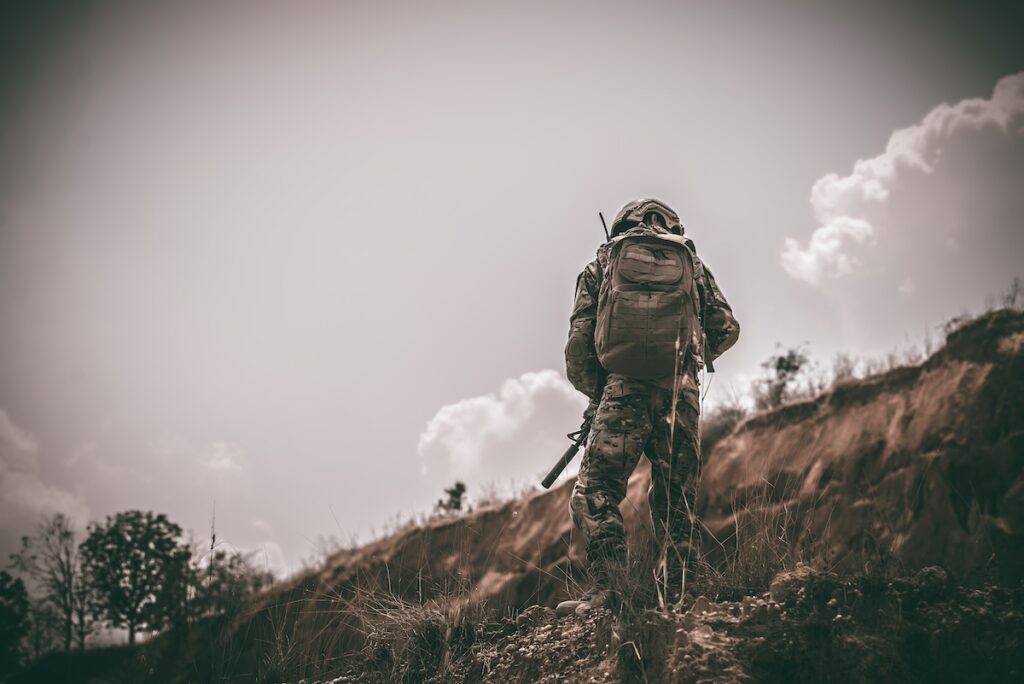The Virulence of Violence: Small Arms, Many Wars, Large Threat
The Washington Post
The proliferation of light weapons is seriously impeding political and economic reforms in developing countries from Congo to Colombia, the author argues, and the resulting downward spiral could threaten U.S. national security.
The Democratic Republic of Congo has a new president, Joseph Kabila. He is a callow man, staggeringly out of his depth. This 29-year-old major general can’t even speak French — the country’s official language. He is surely no more than a temporary place holder, while the dark forces of his fractured nation circle in the shadows.
The assassination of Joseph’s father, Laurent Kabila, last month gave analysts an opportunity to comment on the wretchedness that is sub-Saharan Africa. From Liberia and Sierra Leone in the west to Angola in the south and Zimbabwe in the southeast, the region is a depressing litany of crumbling states, economic crisis and unmet aspirations.
Congo is perhaps the region’s most pathetic country: Three major rebel groups — armed to the teeth, backed by predatory neighboring states, and motivated by
constantly shifting alliances and agendas — are fighting within its borders. In the face of this onslaught by groups with access to the most modern light weaponry, the authorities in the capital, Kinshasa, have lost any semblance of control over the country’s eastern half. The last two years of fighting in the east have cost nearly 2 million lives, including refugees who have starved to death in Congo’s jungles.
Places like Congo don’t get much attention in the rich countries of North America and Europe.
They should. Geopolitically, Congo is important because of its size, position and immense natural resources. The ceaseless struggle for control of those resources threatens to destabilize the entire southern portion of the continent. But events in Congo deserve our attention for another reason: They are a good example of a chronic, deeply embedded pattern of violence that will probably become far more common and that may, in time, threaten U.S. national security.
Of course, many things have caused Africa’s current mess. Colonial powers bequeathed a crazy quilt of territories and boundaries that didn’t remotely correspond to the continent’s ethnic and ecological zones; decades of misguided economic nationalism and centralized planning kept many countries from importing the capital and ideas they needed from the rest of the world; and the authoritarian politics of most African leaders prevented their countries from building the vigorous civil societies that healthy democracies require. Such factors have produced endemic poverty, social dislocation and violence across the Third World for decades.
But something new lies behind the pattern of violence we are seeing in Congo and in many other unstable regions. This new factor is the diffusion of increasingly powerful technologies of violence. As technological change makes it easier to kill people, it’s easier for countries to become locked in perpetual cycles of conflict that render any normal trajectory of political and economic development impossible.
I first realized the significance of this trend in 1998 in a country far from Congo but also riven by chronic violence: Sri Lanka.
I went to Sri Lanka to investigate the Liberation Tigers of Tamil Eelam — the LTTE, or Tigers, for short. One of the world’s most aggressive and sophisticated secessionist movements, the LTTE aims to carve a Tamil homeland out of the north and east of the island of Sri Lanka, and it has waged a brutal war toward this end for nearly 18 years. I wanted to know how such a violent insurgency would affect institutional reform. What I found surprised me: One of the most fascinating things about the LTTE is its use of modern technology and the extent to which that technology has allowed the group to gravely wound Sri Lankan society.
The LTTE has stayed several technological steps ahead of the Sri Lankan military, according to Rohan Gunaratna, an expert on the group who is based in Scotland. It had rocket-propelled grenade launchers and night-vision glasses before government forces had them, for example. And, according to Gunaratna, among insurgency groups, it pioneered the battlefield use of off-the-shelf civilian technologies — for example, in learning how to accurately target projectiles with Global Positioning Satellite signals. The group’s leaders use satellite telephones to link up with their combatants in the field, with their overseas cadres, and with a fleet of deep-sea freighters that maintain a flow of explosives, arms and ammunition.
In my conversations with a wide range of intellectuals and opinion makers in Colombo, the Sri Lankan capital, I found deep despair about the country’s future. They described how the seemingly endless violence had polarized and embittered Sri Lankan society, sharply reduced opportunities for democratic dialogue, and seriously impeded the process of real institutional and political reform — that is, reform of constitutional arrangements, courts, market structures, health services and the like. Indeed, the more people I spoke with and the more I knew about the LTTE, the more certain I became that this organization was a portent of things to come.
One could argue that there are no parallels between the LTTE and the patterns of violence in places like Congo. I would disagree. Rebel groups in Africa appear to be far less organized and technically sophisticated than the LTTE; they inflict many deaths using low-tech methods such as machetes and spears. But the underlying trend is inescapably clear: The relentless technological movement toward cheaper, more portable, and more lethal weapons — and toward better communication technologies and more easily available information on where to find and how to use weapons — has boosted the destructive power of violent subgroups around the planet.
Part of the problem is a legacy of the Cold War. The East and West blocs manufactured and stockpiled hundreds of millions of light weapons — from rocket-propelled grenade launchers, machine guns, and light mortars, to land mines and, especially, cheap assault rifles such as the AK-47. After the collapse of communism, gunrunners and criminal syndicates moved huge quantities of these weapons, along with untold numbers of inexpensive copies, into conflict zones in the developing world, including central Africa and South Asia.
This has helped make previously minor and manageable conflicts savage, as if acid had been poured into open wounds. The result is a vicious circle: Weak and illegitimate governments in these poor countries stimulate conflict, attracting an influx of light arms; the light arms then make the conflicts more extensive, bitter and protracted, which weakens the central governments even more.
I find it useful to think about this problem in epidemiological terms — that is, in terms of the virulence and infectiousness of modern mass violence. The virulence of violence (its fatality rate) increases because individuals or small groups can kill more people faster, at greater range, and with greater coordination than ever before. As Michael Klare of Hampshire College wrote recently, “Equipped with AK-47s alone, a small band of teen-age combatants can enter a village and kill or wound hundreds of people in a matter of minutes.” A few decades ago, that small band might have used bolt-action rifles — weapons that take precious time to reload. In the time available for their attack, they could have killed or wounded perhaps a dozen people.
The infectiousness of violence also increases. Each family that loses a loved one in the village thirsts for revenge. It’s likely that the young men of those families will acquire the very same modern weaponry, enabling them to inflict the same grievous violence on the perpetrators of the attack and their families. So, as the technological capacity to kill increases, the probability that the cycle of attack and counterattack will peter out over time decreases. Better weapon technologies mean that ever-larger numbers of people are sucked into a vortex of bitterness and anger, yet these very same technologies mean that it takes ever-smaller numbers of people seeking revenge to keep the cycle going. This is a recipe for perpetual violence.
Perhaps it is surprising, therefore, that the number of Third World countries suffering from severe civil violence appears to have dropped in recent years, maybe because of the spread of democracy. Nevertheless, in places where civil violence persists, it seems to be increasingly difficult to uproot. There remains a disturbingly long list of countries — including Somalia, Sudan, Algeria, Senegal, Nigeria, Burundi, Angola, Sierra Leone, Russia, Georgia, Tajikistan, Yemen, Afghanistan, Pakistan, the Philippines, Indonesia and Colombia — where modern light weapons (and sometimes modern information technologies) have boosted the ability of ethnic groups, political factions, gangs, bandits and clans to organize themselves and wreak havoc on each other and governments.
In such situations, creating the public goods that are key to long-term prosperity and social well-being — such as efficient markets, effective police and judicial systems, and responsive financial agencies — is next to impossible.
Some would argue that events in such poor and distant countries have little relevance to people in the developed world. But rich countries suffer if significant chunks of the world become more violent and decrepit. Zones of anarchy are not only dead weights on the world’s economy, they can also become sites of major humanitarian crises that demand external intervention, generators of waves of outward migration, incubators for disease as their health infrastructures collapse, and havens for transnational terrorist and criminal networks that target rich countries.
We live cheek by jowl on this planet. The United States can’t hope to isolate itself from these threats, because they can insinuate themselves into our lives by ship, plane and fiber-optic cable. If the United States wants to ensure its national security, it must instead seek to address these threats’ underlying causes, including the spread of modern light weapon technologies in the developing world.
The new administration should therefore put its full weight behind international efforts to monitor, track and control the international production and distribution of these weapons. Because they are small and easily concealed, international control efforts will founder without the help of U.S. intelligence and surveillance. In the broader scheme of American foreign policy, this policy would involve only a minor commitment. Yet it could produce rich rewards — not only by protecting American security, narrowly defined, but also by helping to bring peace, prosperity and democracy to parts of the world that seem to be descending into barbarity.

Topics
Conflict
